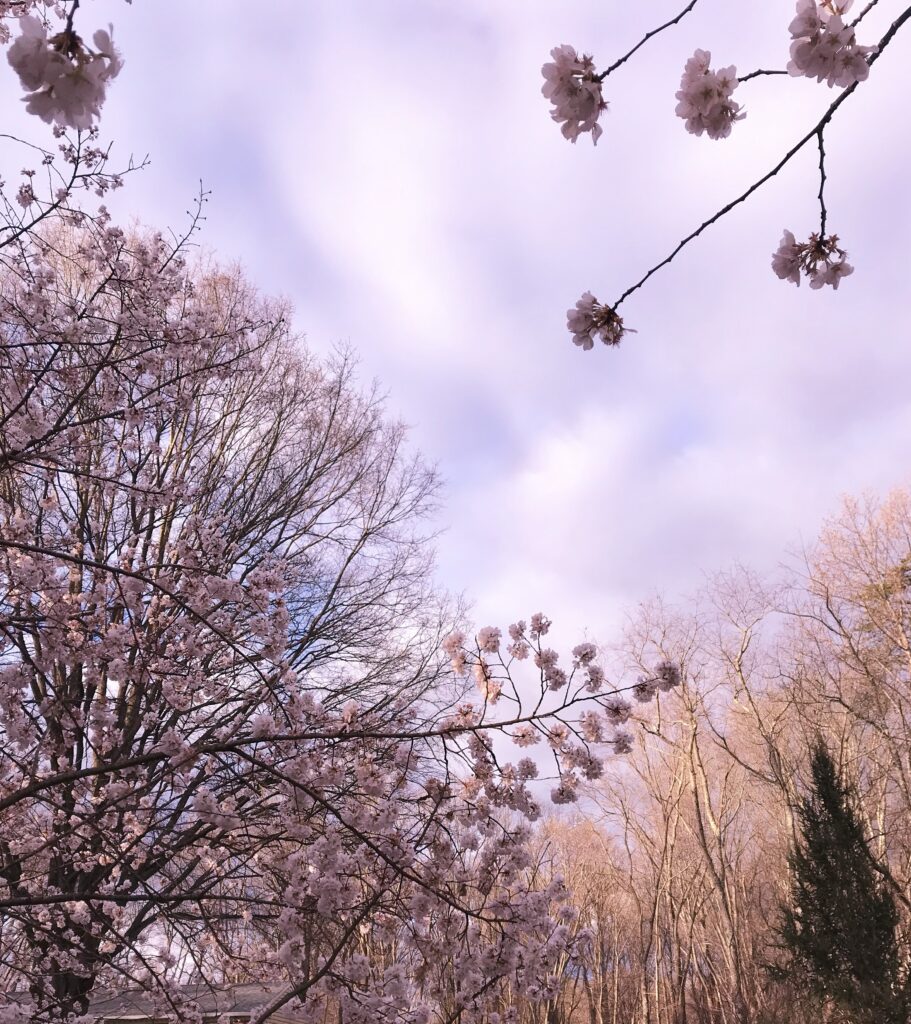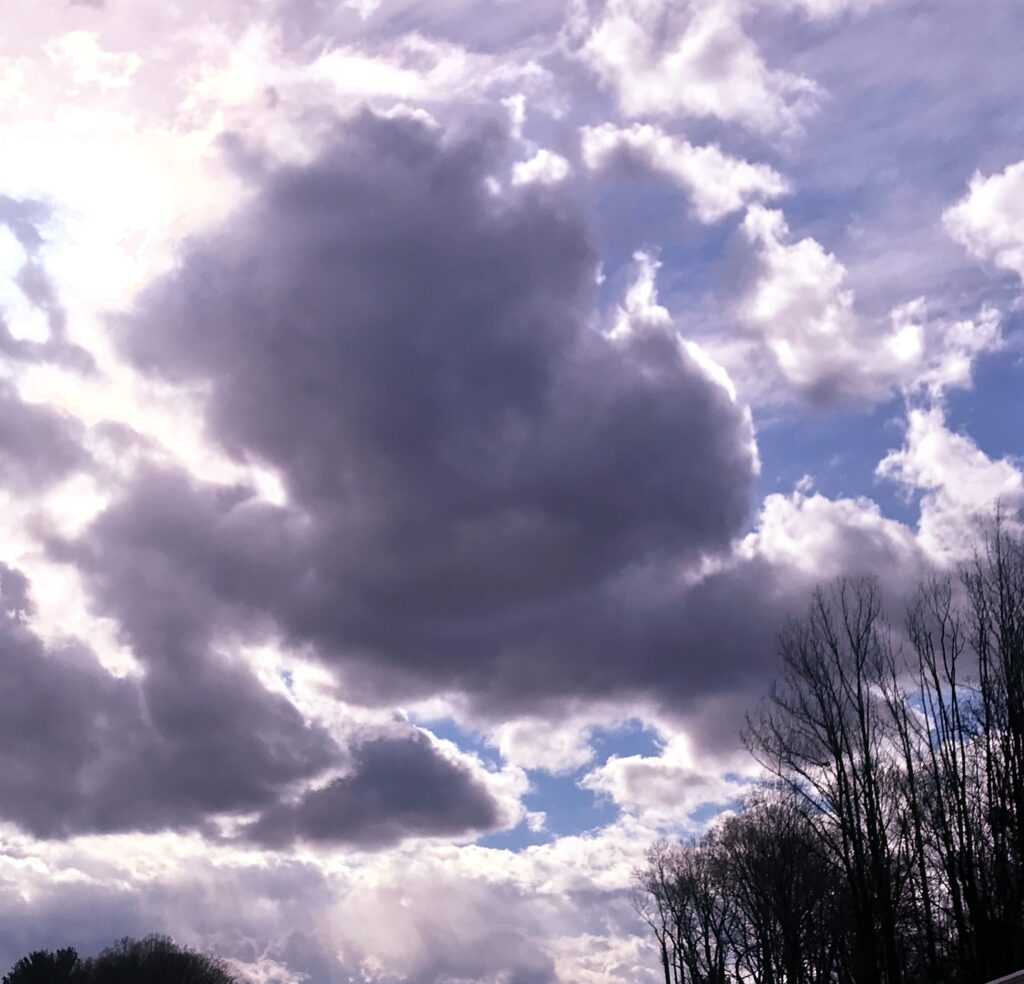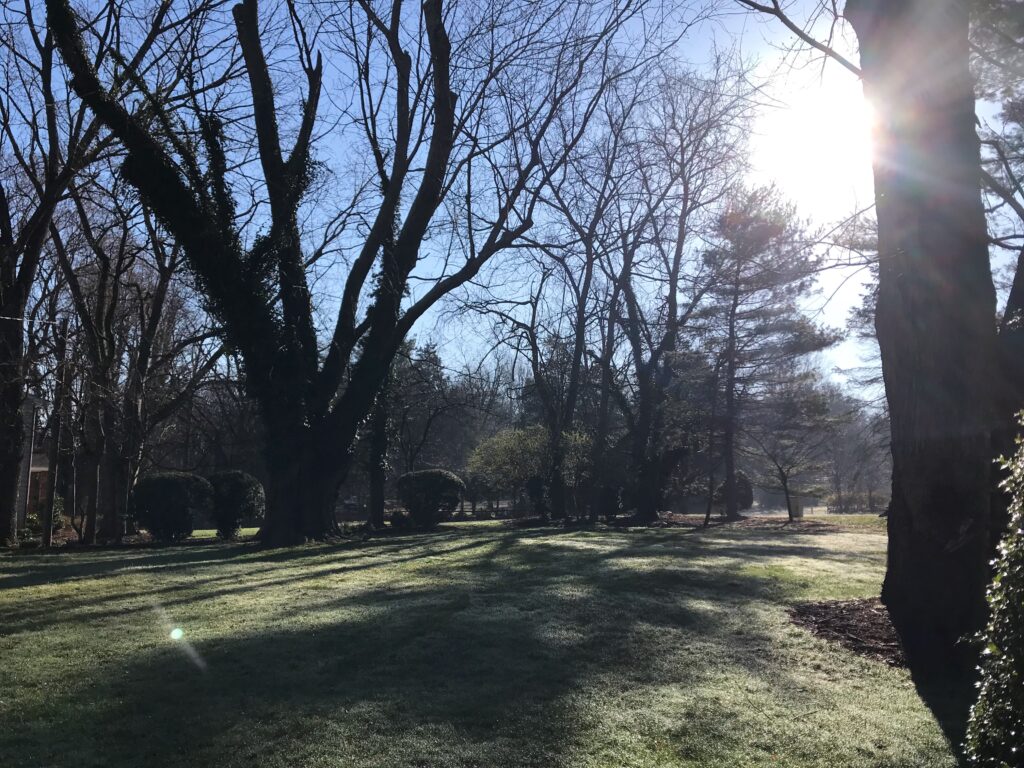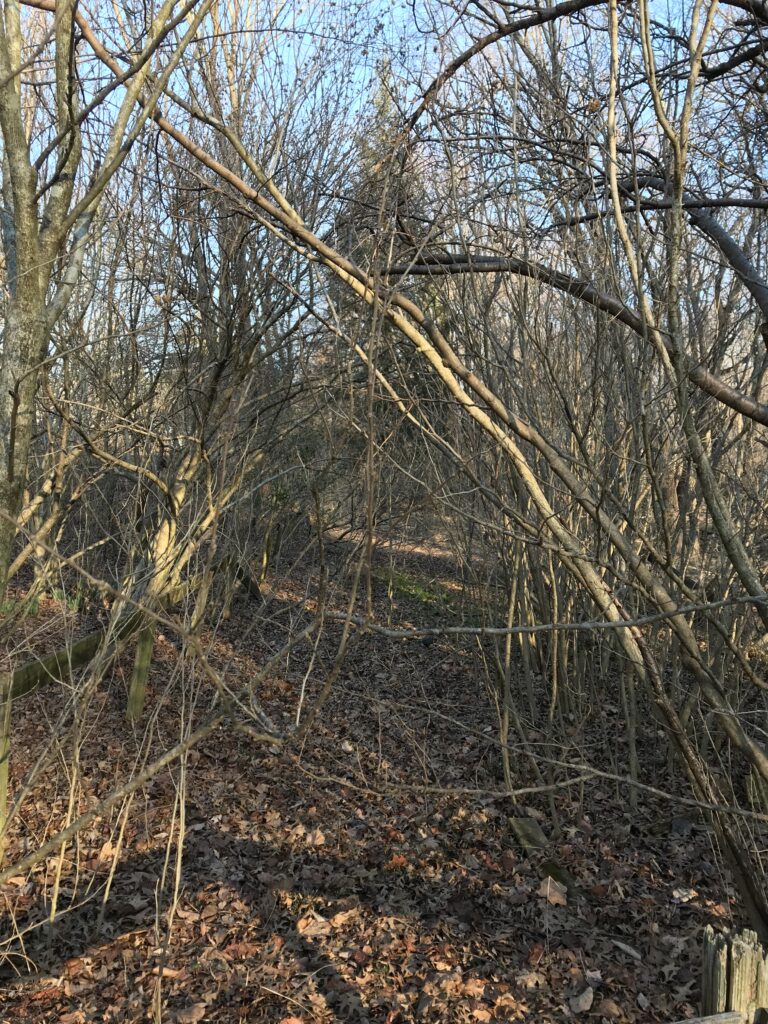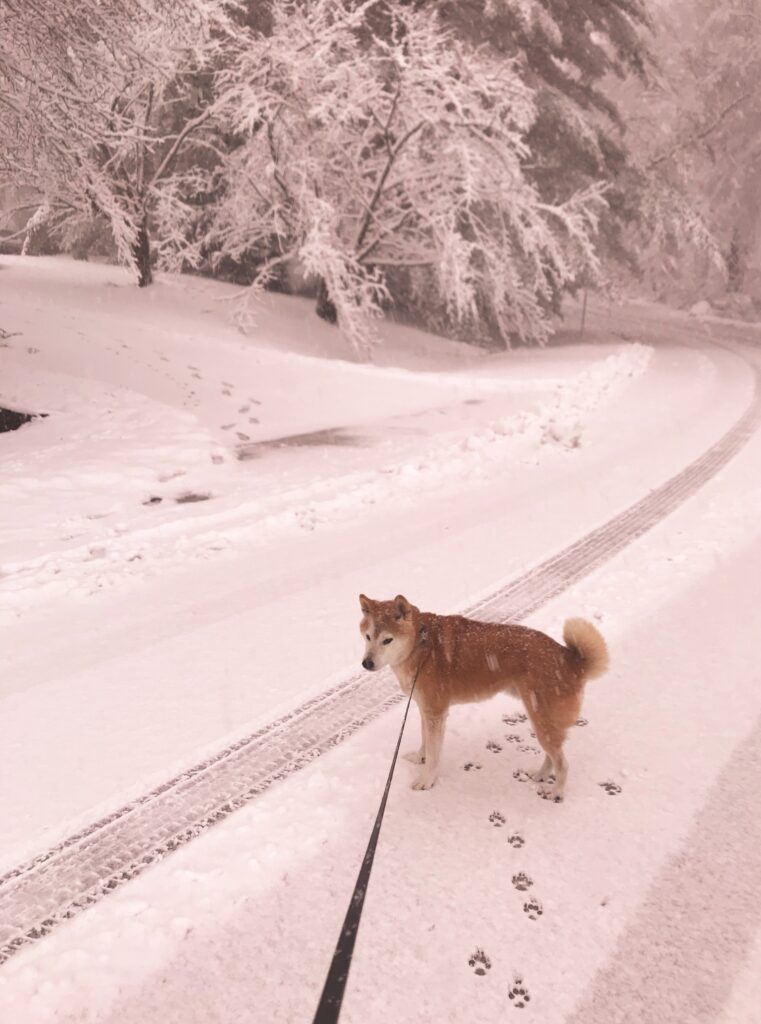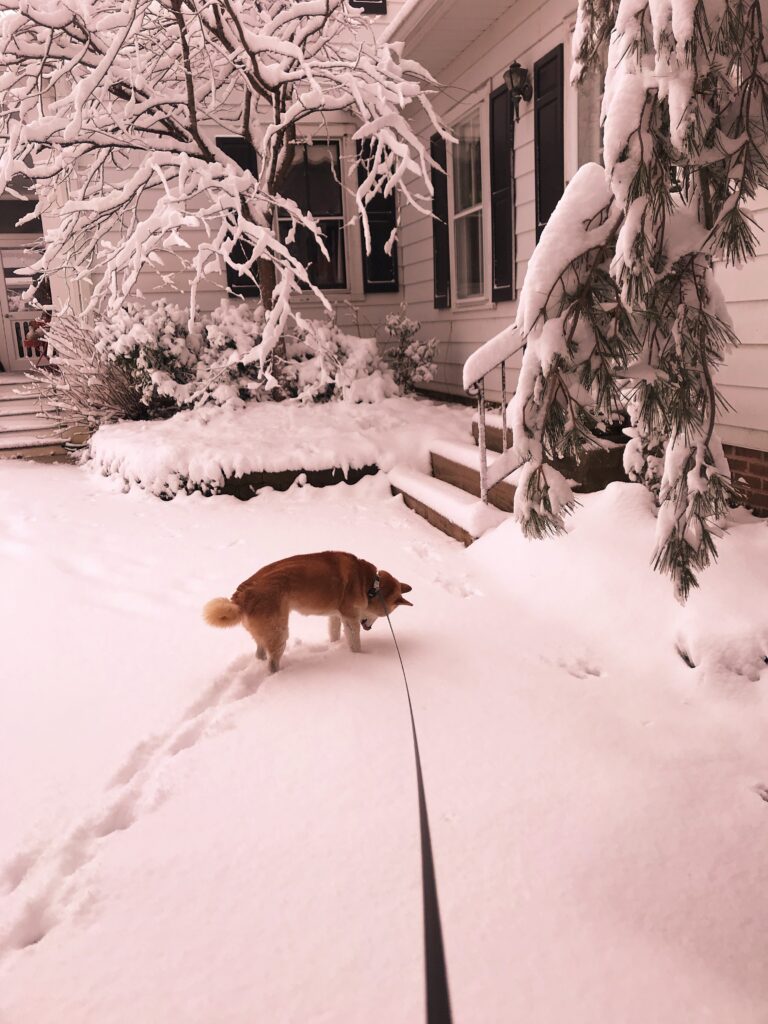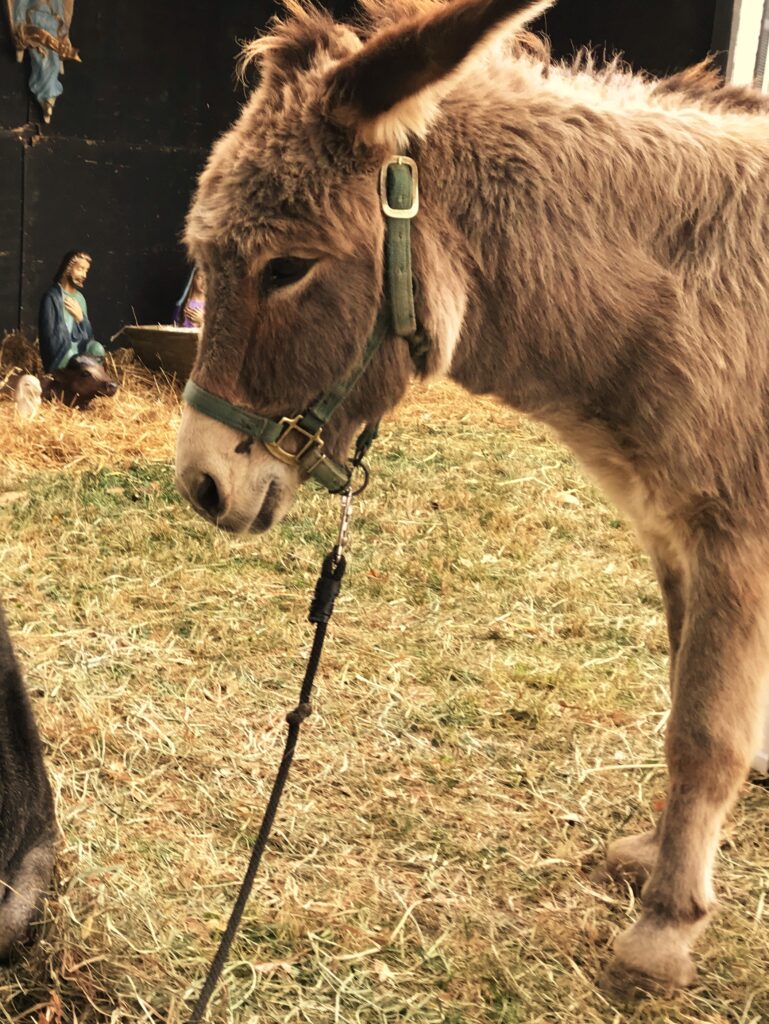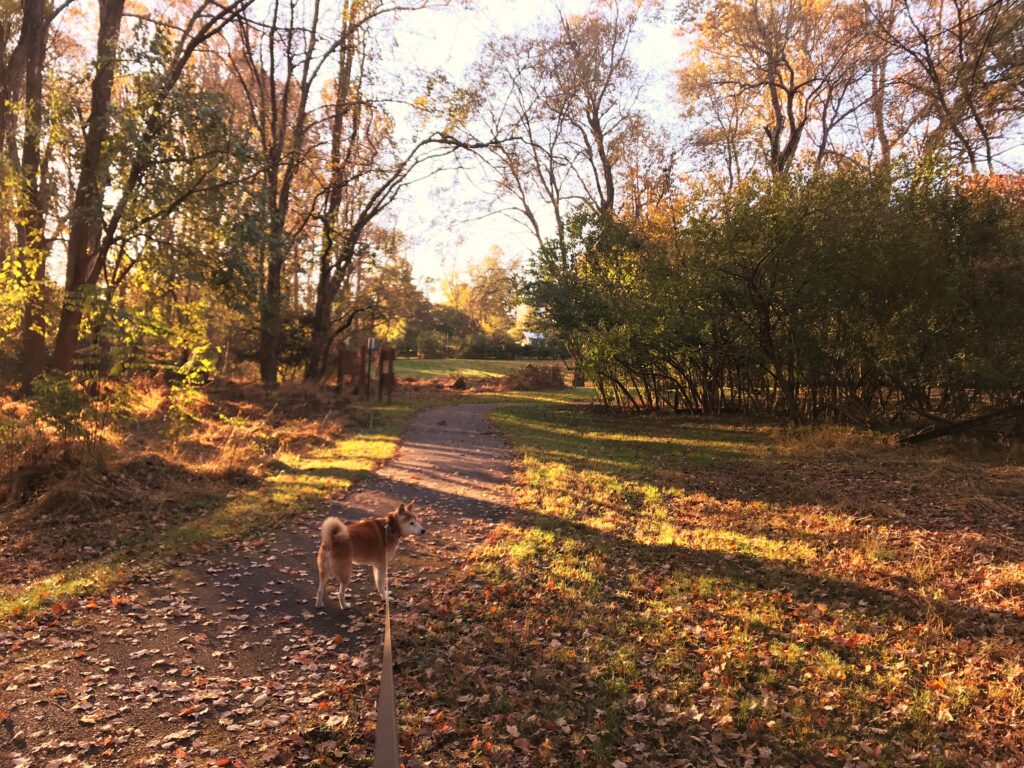In my last post I wrote of the lions and lambs of March sharing the field of play, taking turns. There’s been none of that good sportsmanship for the past few days. The lions seemed to have slaughtered and devoured the lambs.
The recent frigid weather rightfully belongs to January. Temperatures fall to the teens in the early morning hours and creep up to only just above freezing in the afternoons. Sharp winds gust with what feels like a vindictive malice, making it even colder. If you have to be outside, it’s best to move briskly. I think this, wistfully and often, as I stand, holding the leash attached to my sluggish senior dog. He may pace restlessly in the house, but once out of doors, Kiko tends to remain resolutely immobile, transfixed, his nose firmly planted in the grass, lost in a host of smells. A recent injury has slowed my fourteen and a half-year old dog even further. Our “walks” cover far less distance these days, but they’re more frequent, and we’re outside nearly as long.
Gazing out from sheltered comfort, the landscape often has the appearance of early spring perfection. Daffodils nod their sturdy golden heads amidst green sword-like foliage.
The cherry trees were coaxed toward peak bloom last week by a couple of almost summery days. Their blossoms form luminous clouds of pale pink in the bright sunshine.
But a clear blue sky shifts in an instant to a burnished and ominous steel gray.
Clouds race in, seeming to herald an approaching apocalypse.
Bitter gales and icy rainstorms whip through suddenly and repeatedly, doing their best to drive all delicate petals into the ground. On Saturday, my daughter and I attended a local high school production of Annie. After the show, we watched from the glass-enclosed cafeteria as a light drizzle began falling on a courtyard planted with small, lovely cherry trees. The falling petals looked like snowflakes. As the intensity of the rain increased, we looked out onto a blizzard-like scene. And then, as though for a definitive finale, there was a prolonged and pounding hailstorm.
Just another March lion, strutting his stuff. Take that, you pathetic lambs!
Our world, like this month, has far too many lions.

